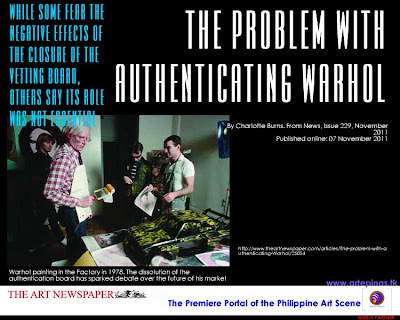
EXPOsición de PiNAS
An International Art Exhibition
Davao City’s Museo Dabawenyo cordially invites you to the opening reception forEXPOsición de PiNAS on Friday the 16th of December 2011 from 3.00pm on. The exhibit runs through January 2012.
The Bahaghari Gallery is open from Monday to Saturday from 9.00am to 12.00pm and from 1.00pm to 6.00pm, with free admission. The Museo Dabawenyo is located along Magallanes St., at the back of the Sangguniang Panglungsod Building.
EXPOsición de PiNAS is an international group art exhibition that endeavors to produce innovative collaborations among emerging contemporary artists with exclusive representation from different countries in America, Canada, New England, France, Italy, India and the Philippines. This large presentation of a highly diverse set of works is seen via the medium of print reproductions of the individual original art pieces. The historic Museo Dabawenyo, situated in the heart of the Durian City of the Southern Philippines, offers an environment adapted to the varied creations and styles that exhibit organizers target to expose to the local and international art scenes.
A compelling combination between painting and photographic prints gives the visitors an exciting overview about modern creations, amplified through the possibility of personal exchanges with the present artists. Davao City’s ‘Museum of the People’ is the ideal venue to host this first edition of this international art presentation and inter-cultural exchange. This local event with worldwide participation and multi-media mileage is made possible through the initiative of home-grown travelling visual artist Victor ‘Bong’ Espinosa.
Living in the highly fluid milieu of our times – at once culturally diverse and rapidly changing – means it is important that the arts of these contemporary environments embrace and reflect these realities. This project hopes to demonstrate the strength of collective voices in deciding the future of neighborhoods, cities, nations, societies, juxtaposed with highlighting the importance of intimate conversations and compassionate social interactions.
In line with contemporary modes, this exhibit has generated interest, participation and awareness using social media, and the organizers will continue utilize this online network of artists and friends to keep the conversation going.
EXPOsición de PiNAS showcases the innovative approaches of artists, as well as circulates fine art exhibitions to large and small institutions such as the exhibit venue Museo Dabawenyo. Covering a broad and dynamic range of art and cultural concepts, it exposes the viewer – fellow artists, students and art collectors alike – to genres, artistic identities and art movements from all over the globe. See you there and see you online!










































































































































































































